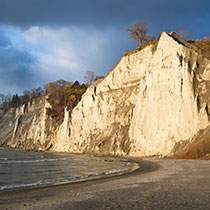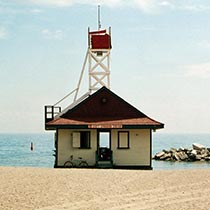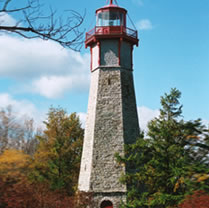The Scarborough Shore
Despite the advent of the railway era in the mid 1800s, Toronto Harbour remained an active shipping port well into the twentieth century. As late as the 1930s, evidence of the many wrecks and disasters that took place east of the port, in front of the Scarborough Bluffs, or Scarborough Highlands as they were then called, could still be seen, strewn along the narrow beach. Here is the story of the wreck of the Alexandria, when she ran aground in a terrific storm off the Scarborough Bluffs on August, 3, 1915, en route from Montreal to Toronto.
Articles in the Globe, the Toronto Daily Star, the Globe and Mail, The Scanner, and other local accounts, indicate that the ship, a wooden steamer under fifty horsepower strong, was carrying a light load ― about three hundred tons of cargo ― including, among other things, various food stuffs, canned goods, a number of cast iron sinks, kegs of brass hooks, and even a number of pairs of high-quality rubber boots. After leaving Port Hope Ontario, she ran into bad weather and high seas, described by The Scanner as a “dirty southeasterly blow.”
As she moved into range of the Highlands, the Captain maintained her engines at full steam, purged much of her cargo, and yet could not stop the slow drift of the ship toward the cliffs, where, in the late afternoon, she ran up against the shallow bottom of the Lake some one hundred and fifty to two hundred yards offshore.
Early distress calls from the ship brought farmers, vacationers, and radial employees to the edge of the cliff shortly after the ship ran aground. Some of these folk scaled the treacherous slope, while others ran down Gates Gully to get to the panicked men, who were clinging to the side of the ship, unwilling or unable to jump into the swells and swim to shore. As the waves continued to pummel the vessel and the ship began to break up, the crew launched a lifeboat, which quickly capsized in the pounding surf. It was at this time that the brawny Ed Middleton, at one time the caretaker of St. Joseph’s-on-the-Lake and himself a former engineer on the Lake boats, or Lakers as they were called, waded into the surf. He tied a rope around his waist, which was secured by the other farmers at the shore, and succeeded in getting the line to the lifeboat, bringing the capsized men safely to the shore.
As one crew member reported in the Toronto Daily Star:
Suddenly we heard a shout that sounded quite close to us . . . and we saw a man fighting for his footing just a few feet from us. It was magnificent! . . . I think his name was Middleton . . . How he managed to get as far as he did without being swept off his feet by the rushing waves or snatched under the surface by the deadly undertow is amazing. But he made it.
Middleton, interviewed by the Globe and Mail some twenty-two years later, said: “It was hard, all right . . . one minute I’d be standing on the bottom, the next I’d be in fifteen feet of water, riding the crest of an angry greybeard.”
A human chain was eventually formed that dragged many of the other sailors out of the perilous surf. Miraculously, the entire crew of the Alexandria was rescued and finally made it to the top of the cliff, where they were attended to by the local farming community.
With calm seas returning to the Bluffs the next morning, the pilferers moved in. Residents who lived near the shore, from the Bluffs all the way over to the Island, were said to have no shortage of sugar or tomatoes for a few seasons to come. Long-time Scarborough resident Robert (Bob) McCowan, whom we met earlier in this section, relates that during World War One, the Alexandria literally started to disappear, piece by piece, salvaged for other uses by residents of the Front, scrap metal being scarce.
Many of the farming families who lived near the cliffs managed to get their own little memento of the ship, including the McCowans, who for years afterward put one of the main ship’s cables to use on their farm. According to Bob McCowan, an old cable of the Alexandria was used to pull a truck free from the radial line that ran along Kingston Road during that period, as well as to remove an annoying tree stump from the edge of the farm gate. Even our street may have its own memento, an enormous anchor set out on the front lawn of one of our neighbours, reportedly to have been recovered from the Alexandria.
The wreck itself lasted for decades, with local children spending many a long summer’s day swimming out to dive off the walking beam of the old ship. Today what is left of her rests within twenty or thirty feet of shore. Her boiler is out there still and may be seen at periods of low water every summer, sticking up out of the blue, just beyond the Queen Anne’s Lace that lines the shore.







